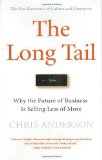#mptech Motorola Case Study to Use Social Media for B2B Event
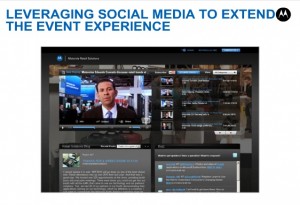 The session I was most interested in attending was the “B2B Events: Build Audience and Extend the Conversation through Social Media” at MarketingProfs SocialTech conferene. Belinda Hudmon, Sr. Director, Interactive Marketing, Motorola, shared how they leveraged social media for their events and to accelerate the sales cycle.
The session I was most interested in attending was the “B2B Events: Build Audience and Extend the Conversation through Social Media” at MarketingProfs SocialTech conferene. Belinda Hudmon, Sr. Director, Interactive Marketing, Motorola, shared how they leveraged social media for their events and to accelerate the sales cycle.
Start with the Customer
Motorola first started from the customer’s perspective to understand the pain point and sales cycle. The company levereaged in-depth research, customer insights and detailed personas to help develop digital toolkits to help prospects and customers through the sales process, such as microsites, product tours, website, social media and communities.
Events Key Part of B2B Sales
Events are key part of Motorola’s B2B sales but the recession impacted audience attendance (up to 50%+ decline for some key events) , especially since many of Motorola’s events were global. Interestingly, virtual events weren’t necessarily the answer as Motorola was cognizant of people’s limited time to participate in such an event.
According to Hudmon, they learned that 69% of business buyers use social media to make a purchase decision (Forrester). This, combined with the impact of the recession on event attendance, lead Motorola to develop its “Share the Experience” site. The goal of the site was to expand the experience for the event with video as the core. They leveraged several social media tactics to seed content and drive engagement:
* Uploaded videos to YouTube
* Had bloggers contributing insights about industry trends and from the industry floor to see what was happening
* Followed Twitter and Facebook to see what was happening via hashtags
* Provided access to initial information on case studies and other content from content sites, social media integration (e.g. flickr), etc.
* Promoted the site via email, twitter, and facebook to give info about the speakers, as well as feed information about the show back to their different social communities
* Recently provided mobile experience as well
Results: Increase Engagement, Thought Leadership and Post-Show Dialog
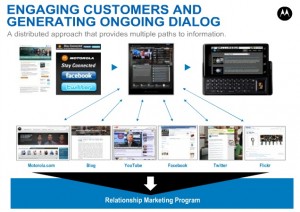
Overall, the “Share the Experience” site helped Motorola to establish a following with their customers, partners and prospects which extended their dialog with these key audiences. This also helped drive Motorola’s thought leadership platforms with blog postings and real-time updates from Twitter and Facebook. This has become an integral part of other shows and as a way to launch other thought leadership platforms.
Highlighting the value of archival content, Motorola discovered that 60% of the videos were watched after the event had concluded with 3X more demos completed online overall.
Questions from the Audience
Note: I tried to capture the questions and quote as fully as I could and is not meant to be a “transcript” of what was said. Questions are in purple with the response italicized.
Built the virtual conference platform internally for Motorola. Why internal vs external? Looked at virtual events and one of the issues with virtual events is that people’s time is limited. With the “Share the Experience” site, we weren’t trying to replace virtual but have an experience before, during or after the show. Have done some virtual that weren’t live stream and more on-demand scenario. Have tested the virtual event as an augmentation to events to see live and ask questions.
Social media integration – used corporate Motorola or different accounts within the event? Started by an event site but realized the opportunity was a Motorola site or audience-specific site. As set up the site and interface with it and can have a long-term interaction. So leverage the audience site to interface with event sites as they come online.
Conclusion
Motorola recognized that events were an integral part of their sales process, but the recession greatly impacted attendance at their global events. By understanding their customers – especially that these are time-constrained professionals, the company opted for a website-based experience integrated with social media versus a virtual event. In this way, Motorola discovered an effective way to drive engagement, thought leadership, and I’m assuming, sales forward.
How are you using social media to drive your B2B events? What other strategies are you using?
Go Giants in World Series and Viral Video
In honor of the SF Giants in the World Series today, here is a viral video from a fan (Ashkon Davaran: twitter ashkonmusic) that has generated over 1 million views. This video captured the hearts of the SF Giants season. Maybe this video wouldn’t have gone viral if the Giants didn’t win the pennant, but that’s the point.
Going viral is part content, part timing and part luck. In this case, all three came together.
Go Giants!
#mptech Guy Kawasaki Keynote and 6 Twitter Tips
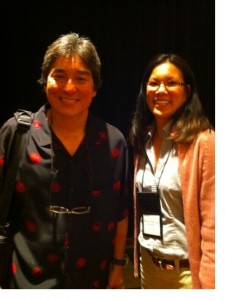
I attended MarketingProfs SocialTech conferenceyesterday, which brought together a great roster of speakers including Jeremiah Owyang, Robert Scoble, Michael Brito, Laura Ramos and more. The ending keynote was Guy Kawasaki on how to use Twitter for B2B marketing.
I plan to post summaries of the sessions I waas able to attend either today or tomorrow, but wanted to start with Guy’s presentation first. Why? Because he decided to give an unusual keynote.
Instead of a straight forward keynote about the strategy of Twitter, he gave a more stream-of-consciousness look into how he uses twitter on a day-to-day basis. After a long day of sessions and enormous amounts of ideas/information, I thought this was an entertaining way to discuss why Twitter is integral for marketing and how to leverage it.
Be Memorable, Be an Expert – Six Tips for Twitter
1. “Sucking up is key”– Guy’s point is that you have to be kind to people on Twitter. This is one of the best ways to get people to follow and retweet you.
The Takeaway: Tweets are just a collection of letters and words. Intent can sometimes be misunderstood. As such, follow the Golden Rule and you will avoid any misunderstandings.
2. Be an expert –Want more followers? Be interesting. To do this, monitor those who are considered experts. When appropriate, share interesting feedback or content to be seen as intelligent contributor. Once they retweet your contributions, you’ll then be seen as an expert in turn.
The Takeaway: Be very clear on your messages and how you want to position your company on Twitter. Everything you tweet should be related to this to further position you and your company as an expert.
3. Use search intelligently– There are many ways to use search. The question is which parameters are you using? Consider searching beyond just the content of the tweet to look at profile information (search by title, geography, bio) or even look at tweets to and from a person. This helps you to better do points 1 and 2.
The Takeway: Conduct regular search to identify new influencers within your space.
4. “Tweet is the new haiku” – You only have 140 character. In order to capture attention, you have to be interesting. If you’re not the best person, then find someone who can.
The Takeaways: The best person to contribute to your Twitter feed may not even be in the marketing or PR department.
5. Social content curation – One of the controversial issues with Guy’s Twitter feed is his use of ghost contributors to his feed. In his keynote, Guys highlights how he collaborates with this group like a managing editor would with his writers. If he sees something interesting, but is unable to tweet or blog about it, he assigns the story to one of the appropriate ghost writers. This helps keep his content fresh while providing a benefit to his readers.
The Takeaway: Twitter never sleeps but individuals do. Instead of one person monitoring your Twitter stream, have a group of individuals within a corporation monitor and response for you customer support or brand management needs.
6. Be like CNN – Don’t assume everyone sees your tweet the first time. Consider tweeting 2-3 time during different time zones so the maximum number of followers see your tweet. (Note: according to Guy, this is against Twitter’s terms of use. Though he hasn’t been terminated for such behavior, he is probably an exception. Hint to Twitter – another way to generate revenue?).
The Takeaway: Marketers are content creators and publishers. In the case of Twitter, what may seem “spammy” may actually be the best strategy to ensure your message is seen and read by your customers, partners, and prospects.
Conclusion
The keynote didn’t have a direct way of presenting how one could use twitter for B2B marketing. Rather, Guy shared a collection of ideas and thoughts of his personal use to inform marketers on what could work for them. And depending on your needs, each marketer could walk away with a deeper understanding of how to use Twitter for her own marketing needs – both from a tactical and strategic perspective.
If you watched the keynote (either in person or virtually), what did you think? Do you agree or disagree with me? What takeaways did you have?
Rise of Social Commerce – Nielsen and Hallmark Summaries
 I attended the second day of the Altimeter Group’s Rise of Social Commerce conference last week. This is the second post summarizing the sessions at the conference. The first highlighted Charlene Li’s Open Leadership presentation.
I attended the second day of the Altimeter Group’s Rise of Social Commerce conference last week. This is the second post summarizing the sessions at the conference. The first highlighted Charlene Li’s Open Leadership presentation.
Nielsen – Social Media Does Correlate to Sales
Pete Blackshaw of Nielsen provided some stats and insight into the role of mobile and social media on commerce. The key message is that social media does correlate to sales. Whether it’s the trigger for the sale or the function of the echo chamber, Pete’s message is that it still correlates to sales.
Of the stats that he presented, these caught my eye:
* mobile phones will overtake PCs by 2015
* main ways to discover is through search and Word of Mouth
Implications for Marketing and PR
These stats demonstrates the importance of evaluating the ways we reach and connect with audience through our marketing and public relations efforts. Understanding the trends that trigger word of mouth are more important than ever to determine what will drive business forward. As Pete stated, “Many social conversations begin offline.”
Being able to tap both online and offline conversations, while helping your clients be found in the way that audiences want to find you, will become a more integral part of our jobs.
Hallmark – Blazing the Trail
Camille Lauer of Hallmark provided a different perspective – how a traditional card company is moving into the social arena. the company’s goal is to have people consider Hallmark beyond major holidays to every day moment. The challenge, according to Camille, Hallmark, is being sensitive to their physical, retail business and franchises.
Creating an Authentic Voice
Camille was very forthright on what worked and didn’t work as they cautiously moved into the social arena. Their goal was creating a more authentic voice that resonated with their audience. As part of this effort, they launched card contests, inviting their audience to submit unique cards. One winner would then be selected to have his/her card produced for the Shoebox line.
While the card contests were a hit, they quickly realized that their community wanted to hear from Hallmark. The Hallmark team began filming behind-the-scenes videos to share the card selection and judging process with their audience. This allowed their audience to connect more with the company and engage in an ongoing conversation.
Keeping It Simple – Facebook App
Yes, the physical card company does have a Facebook App – the Hallmark Social Calendar. For Hallmark, the goal is to translate emotions into bite-sized goods and virtual gifts. At first, the company added a lot of bells and whistles and realized that people only wanted a simple calendar.
The company also learned to encourage engagement with the audience (earn points through activity with the application) and how people wanted to pay for the virtual gifts.
Conclusion
Pete’s presentation provided great insight into how consumers are discovering and purchasing goods, while Camille highlighted how a 100 year-old company is moving into the digital arena. In the end, no matter what you do or create, you have to keep the customer center throughout. It’s amazing how often we forget that as marketers and PR professionals.
Are you currently implementing a mobile marketing strategy or have used the Hallmark Social Calendar? If so, share your experiences below.
Rise in Social Commerce – Charlene Li’s Open Leadership Session
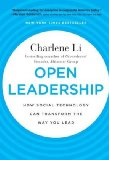 I had the opportunity to attend the second day of the Altimeter Group’s Rise of Social Commerce conference yesterday. After listening to the sessions and speakers, I realized that social commerce, in many ways, is still in its infancy when compared to the best practices and data available for “traditional” retail. With that said, I anticipate that the gaps will be closed quickly. This is the first of a couple of posts summarizing the sessions at the conference.
I had the opportunity to attend the second day of the Altimeter Group’s Rise of Social Commerce conference yesterday. After listening to the sessions and speakers, I realized that social commerce, in many ways, is still in its infancy when compared to the best practices and data available for “traditional” retail. With that said, I anticipate that the gaps will be closed quickly. This is the first of a couple of posts summarizing the sessions at the conference.
Social is about relationships
While I haven’t read Charlene Li’s recent book, Open Leadership: How Social Technology Can Transform the Way You Lead, I am keen to add this to my reading list soon. Charlene began her presentation discussing relationships.
To paraphrase, “Social is about creating and deepening relations. And business is all about relations. If one is in a relationship, then you can’t control the relationship. Rather social commerce provides organizations a way to deepen their customer relationships beyond transactional loyalty.”
Rethinking Leadership
According to Charlene, leadership may no longer be those who sit on top of the hierarchy chart. Rather, leaders are those who can impact the organizations based on their institutional knowledge and ability to make connections to get things done.
For example, Starbucks invited consumers to share their ideas regarding new products or improvements for the company. While the company could’ve taken these suggestions and provided minimal input, the company ensured that decisions were transparent to everyone. This required creating a team of more than one person – identifying those from different parts of the organization who 1) could provide insights into the process while 2) connecting with customers in real-time.
Social Discipline and ROI
Charlene concluded her presentation by highlighting the importance of discipline for social media, as well as reevaluating social media’s ROI.
The discipline is not about leveraging the tools regularly and consistently, but rather about understanding the flow of information through your social media process. When this discipline is in place, then you know how to manage emergencies, while gaining a three-dimensional view of your customer.
“We tend to overvalue things we can measure and undervalue those we can’t”
– CMO of American Express
With regard to ROI, Charlene urged the audience to consider a lifetime calculation that captures more of the behavior of customers, such as referrals, versus short-term results. This will help organizations see the value of a long-term relationship and invest mare into the relationship.
Conclusions
Many of the panelists highlighted how internal leadership was integral to spearheading their social strategies. Charlene’s presentation provided a glimpse into the entire value chain of how organizations can identify and tap “leaders” via social technologies, which in turn drives the relationship with customers in an increasingly social ecosystem.
Update on Trusting PR Agencies without a Social Media Presence with Your Social Media Programs
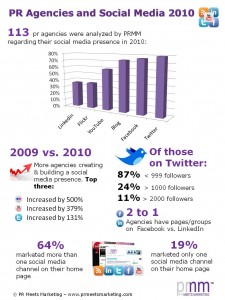 In February 2009, I wrote a post titled “Would YOU Trust a PR Firm without a Social Media Presence with Your Social Media Programs” to determine how many agencies were active in social media.
In February 2009, I wrote a post titled “Would YOU Trust a PR Firm without a Social Media Presence with Your Social Media Programs” to determine how many agencies were active in social media.
While anyone who establishes a Twitter account or LinkedIn Group is not automatically an “expert” on social media, I do believe that you should practice what you preach. This point, as well as the role of a corporate presence vs. individual contributors, generated a lot of discussion.
Since the original post, my position about individual contributors has evolved. I believe that employees are an integral, if not essential, part of a successful social media strategy. However, to simplify the data gathering and analysis, I opted to focus on corporate presences, recognizing that multiple individuals are contributing on behalf of the agency.
I’ve included a slideshare presentation below, images on flickr that you can share (including the infographic to the left), and the list of PR agencies accessible via Google Docs (All changes for 2010 are indicated in red. Please feel free to make an update and include a comment below).
Key Findings: PR Firms More Social in 2010
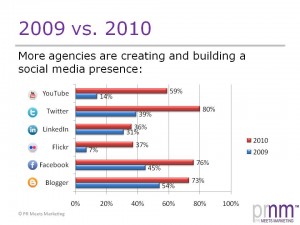
* PR agencies increased their social media presence in 2010, with Flickr (500%), YouTube (379%) and Twitter (131%) demonstrating the largest increases respectively.
* While most agencies didn’t link to their social media channels on their website in 2009, 83% included this on their home page in 2010.
* Twitter was the most popular social media channel, with 80% of PR agencies having a presence. 35% had followers numbering over 1000.
* 2 to 1, PR agencies had a Facebook Page or Group vs. a LinkedIn Group Page
Conclusions: What a difference a year makes
In just over 18 months, PR agencies have increased their presence on several social media channels. While content was not evaluated as part of this review, some agencies leveraged Flickr and YouTube to promote their clients. This raises an interesting issue about agencies becoming an active publishing entity.
If a PR agency ammasses thousands of followers or create a highly-ranked/influential blog, will it have the potential to become an informal media outlet itself? And if so, how will PR agencies manage this changing landscape? What do you think?
Methodology
I initially evaluated PR firms listed on O’Dwyer’s list of top 100 independent PR firms. This list was based on worldwide fees for firms with major US operations. As such, some prominent firms, such as Ogilvy & Mather, Ketchum PR and others. An additional 13 firms, who had proactively added their information to the PR Firm Social Media Wiki, were added to the 2010 review, yielding a total of 113 firms.
* I looked at if the agency had a blog, Twitter profile, Facebook page (both group and/or fan), LinkedIn Group, YouTube Channel or Flickr photostream.
* I didn’t categorize the type of PR each firm did – I took the list at its word
* If the blog wasn’t listed on the home page or easily found via a sitemap, I assumed there was none
* I searched on the agency’s name or common abbreviation as presented on their website. Anything more exotic or too cute, would not have been found
* For Twitter, I used Twitter search or tried to manually type in what seemed like an appropriate Twitter handle. Number of followers were based on number the week of September 20, 2010.
* I used the group search functions found on Facebook and LinkedIn respectively. I was looking for those who had proactively created a group page or claimed their fan page on Facebook. As such, LinkedIn Company pages were not included.
WITI Summit: Summary of Social Media, Cloud, and Mobility Sessions
 I attended the WITI Summit earlier this week, recapping the keynotes on the first day. On the second day, I attended three panel sessions on the Applied Cloud, New Opportunities in the Mobile Market, and Social Media Business Solutions. Below is my summary of these sessions:
I attended the WITI Summit earlier this week, recapping the keynotes on the first day. On the second day, I attended three panel sessions on the Applied Cloud, New Opportunities in the Mobile Market, and Social Media Business Solutions. Below is my summary of these sessions:
Applied Cloud Panel Discussion
The panel discussion highlighted the benefits of cloud applications in terms of cost efficiencies, speed to implementation, scalability, and flexibility. Vanessa Alvarez, analyst with Frost & Sullivan, indicated that a hybrid approach (on-premise and cloud) may emerge which may ease issues with integration across multiple vendors and data.
While the benefits of cloud applications was discussed, the issue of data integration was present. According to R. Ray Wong, analyst with the Altimeter Group: ” Integration is very hard. Going backwards to best of breed … People are going out to procure apps themselves. Integration has to come back to have same reports. Everything is coming back as have to have a good data architecture and how the business processes get tied back for reporting. Then can talk about data integration.”
In the end, the possibility of SaaS suites will emerge.
Mobile Marketing
Mobile is becoming an integral part of our lives. The panel clarified that there are six types of mobile applications: 1. Communications, 2. Games, 3. Multimedia, 4. Productivity (email, calendaring, etc.), 5. Travel, and 6. Utilities (address book, task manager, etc.).
Considering that the US has double the number of smartphones than China, which is second worldwide, there is ample opportunity for marketers to leverage mobile. The key takeaway was to provide your audience with useful applications that address their needs. For example, applications for new mothers would be an interesting opportunity for Johnson & Johnson or other company targeting new moms.
Social Media Business Solutions
The panel consisted of representatives from Meebo, Paypal, and IBM. For me, I found how Paypal and IBM leveraged social business very interesting:
Paypal Leverages Social for Community Forum and Customer Service
Paypal is leveraging social media as part of the service’s web self-service. The goal is to provide a long-term community to better understand the needs of their audience. For Paypal, the value is understanding the cost of product development and launch. With web analytics, they are also able to track customers and determine the path for communications help.
IBM Connects with Partners with Virtual Event
For IBM, they built a robust virtual event to learn from partners and provide them the information they need from IBM. 5,000 partners attended the virtual event live with 2,500 accessing the archive. IBM’s goal was not to replace its physical event with virtual. Rather, they can be selective with face-to-face events, using virtual to supplement the face-to-face.
In terms of value, they reviewed the analytics to measure against their objectives, such as engagement, did the conversations continue beyond the event, or was the conversation at a deeper level.
About
Favorite Service
Recent Comments
- on Going Virtual Isn’t Necessarily the Answer to Replacing Your Physical Events
- on Going Virtual Isn’t Necessarily the Answer to Replacing Your Physical Events
- on Going Virtual Isn’t Necessarily the Answer to Replacing Your Physical Events
- on Going Virtual Isn’t Necessarily the Answer to Replacing Your Physical Events
- on Going Virtual Isn’t Necessarily the Answer to Replacing Your Physical Events
Ads by Google
Favorite Books
Marketing Blogs
PR Blogs
- KD Paine's Measurement Blog
- Micro Persuasion
Virtual Events & Meetings Blogs
- Cisco Virtual Environments
- It's All Virtual
- The Webinar Blog
- Virtual Edge Institute

 Follow
Follow Cece Salomon-Lee is director of product marketing for Lanyon Solutions, Inc. and author of PR Meets Marketing, which explores the intersection of public relations, marketing, and social media.
Cece Salomon-Lee is director of product marketing for Lanyon Solutions, Inc. and author of PR Meets Marketing, which explores the intersection of public relations, marketing, and social media. 

